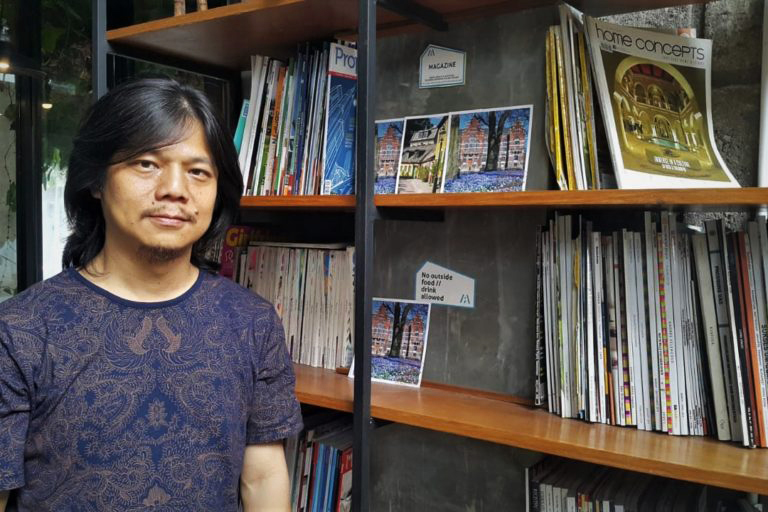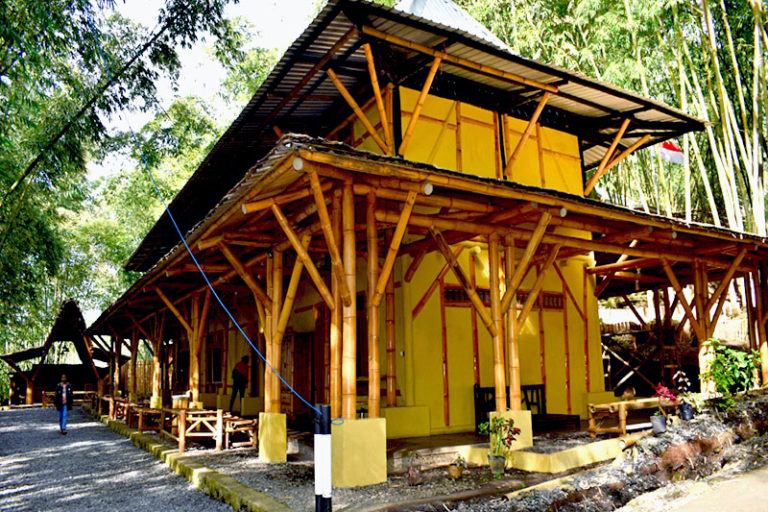Yu Sing, an Indonesian architect, relies on local materials when constructing homes and public spaces. “Natural houses are no longer the first choice for people’s homes,” Yu Sing said. “The state even calls them uninhabitable homes.”
 Yu Sing founded Studio Akanoma in 2008 to showcase the design of low-cost housing using natural materials. A year later he published “Dreams of Affordable Homes,” which covers his design process and shows a breakdown of development costs, which are often low when opting for local building materials.
Yu Sing founded Studio Akanoma in 2008 to showcase the design of low-cost housing using natural materials. A year later he published “Dreams of Affordable Homes,” which covers his design process and shows a breakdown of development costs, which are often low when opting for local building materials.
Studio Akanoma cites the decline in the use of nipa, a mangrove palm, in roofing. Today most new homes opt for more expensive zinc sheets because the nipa palms are widely seen as backward. Some believe the palm fronds will last only one year before a replacement thatch is required, but nipa, when thatched correctly, can ensure long term waterproofing, cooler temperatures and quieter living conditions compared with the disruptive patter of rain on a hot zinc roof.
In 2016 Yu Sing and colleagues designed the simple kitchen from bamboo for a local women’s group. The kitchen was a place to learn and hone their craft, producing food from wild plants and locally grown produce. The kitchen’s bamboo roof appears inverted, but it is a deliberate technique to retain rain for drinking water. The kitchen walls are made from a composite of soil, rice straw, rice husk, limestone and cow manure.

Bamboo has been used for food and shelter for centuries across these islands, but when Yu Sing hired carpenters to build the structure, he found bamboo was almost a novel commodity for the tradesmen. “They said it was their first time as carpenters to have a lot of bamboo to make bamboo constructions,” he said.
Yu Sing took bamboo from a local forest and designed a rainwater retention system to preclude the need to drill for groundwater.
The architect said he believes loss of reliance on nature for building materials is reinforcing our waning connection to nature more broadly — a trend Yu Sing is trying to confront in his contemporary architecture. “Why is nature broken? Because we don’t depend on nature,” he said. “It’s as if we don’t need to preserve nature.”
You can read the original article at news.mongabay.com

